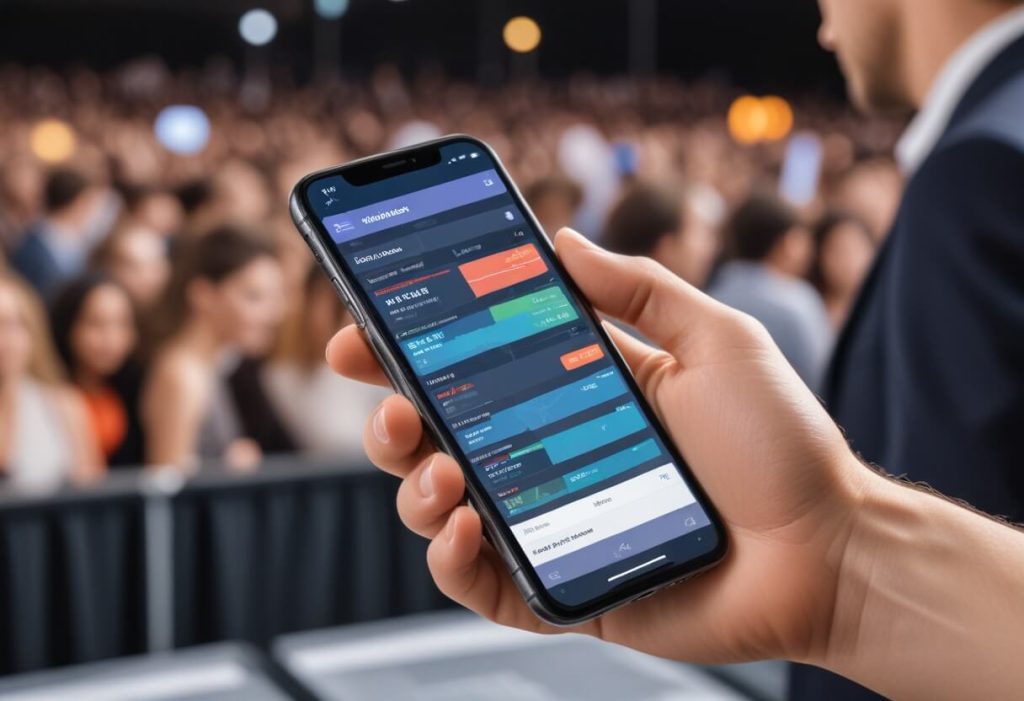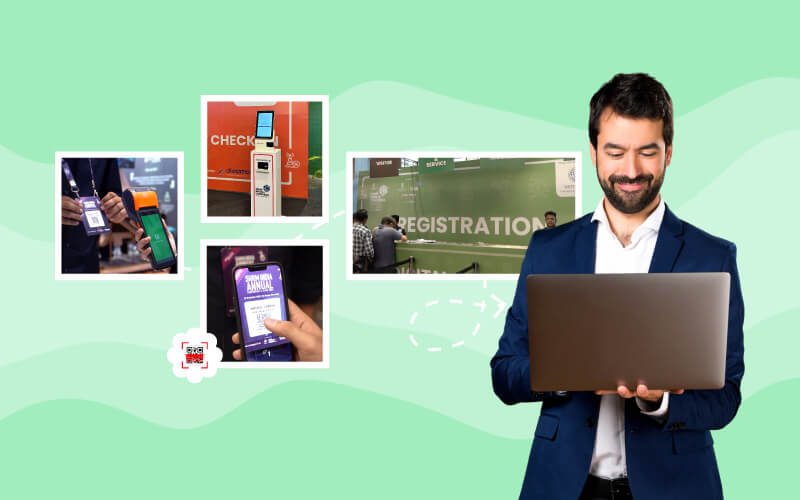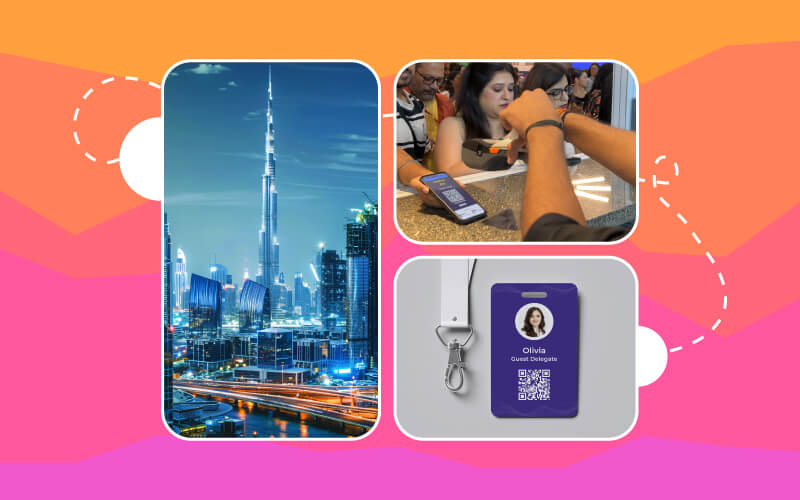App developers must understand user behaviour in order to succeed in the fast-paced world of mobile applications. It’s one powerful tool that directly impacts the mobile app’s performance via event tracking. The key to boosting engagement and conversion rates within your mobile app lies in analyzing mobile app event tracking. By analyzing how users interact with your app, you can take action to optimize user experience and ultimately improve engagement and conversion rates.
Mobile App Event Tracking: Benefits Via Real-Time Event Monitoring
Event Tracking via Mobile Apps is tracking and analyzing user interaction in your mobile event app. Anything from simple things like clicking a button to more complex behaviors such as purchases inside an app, or finishing a level. Anything that is happening in these events is able to gather some data that will help with better understanding of user behaviour, preferences and pain points. Here are a few benefits of using mobile event app for event tracking.

1. User Engagement: You can track user engagement with attendee tracking to understand how active your users have been for interacting with these features, and content within your app. This information can be used to pinpoint which areas of app are most used and provides insights on where users might be facing issues.
2. Conversion Rates: You can identify where conversions are getting blocked in your app by monitoring events such as sign-ups or purchases. This insight allows you to make data-driven decisions that optimize the user journey and increase conversion rates.
3. Personalization: Event tracking data can be used to personalize the user experience. By understanding individual user behaviors, preferences, and interactions, you can tailor content, recommendations, and notifications to enhance user satisfaction and retention.
4. Feature Optimization: Analyzing event tracking data can help you identify underutilized features or areas of your app that may need improvement. By optimizing these features based on user behavior, you can enhance the overall user experience and drive higher engagement.
Best Practices for Mobile App Event Tracking
Here are the best practices for implementing mobile app event tracking to boost engagement and conversion rates, a crucial aspect for those providing Java application development services:
Define Key Events
Figure out the most important events that correspond to your app strategy. This can be onboarding completion, in-app purchases or social shares for example … Pay attention to the Big Stuff — so that you pick up the right data(Thread) and do effective analysis ( what actions to take basis on which insights?)
Implement Tracking Tools
With mobile app event tracking tools like Firebase Analytics, Google Analytics for Mobile Apps and Mixpanel to help you track and analyze user events. The tools would give you interesting insights on how people use your app with common activities, retention and conversion metrics.
Segment User Data
To segment user data by demographics, behavior or engagement level in which to isolate particular horde confinement simply and market to those users with different messaging or promotions. This allows you to target specific users with unique content that should increase attendee engagement and conversions

A/B Testing
Experiment with different app features, designs, or messaging using A/B testing to determine which variations drive higher engagement and conversions. Test and optimize based on event data analytics data to continuously improve your app’s performance.
Iterate and Refine
Regularly review and analyze event tracking data to identify trends, patterns, and areas for improvement. Use this data-driven approach to iterate on your app’s features, user experience, and marketing strategies to continuously enhance engagement and conversion rates.
Finalize the Questions You Want to Answer
Determine beforehand what kind of insights you want from your event data. Questions such as “How long is a user taking to make their initial purchase?” or “How many levels do users play on average before making a purchase?” will help clearly define the overall goal of tracking and monitoring your in-app data.
Specify the Event Properties
Specify the event properties that will answer your questions along with the stream of events. For example, to answer the questions above, you can generate streams such as Login, Tutorial Completed, Level Completed (for ~4-5 times), and Purchase.
Test Your Event Data
Test your event analysis instrumentation code thoroughly before distributing your app, as there is no easy way to go back and fix problems once it’s live. Event analysis instrumentation is as important as your feature development.
By following these best practices, you can effectively implement mobile app event tracking as part of your mobile app business plan to gain valuable insights, optimize user experience, and drive higher engagement and conversion rates.
What Functionality are Recommended for Mobile App Event Tracking?
Based on the search results, here are the key functionalities recommended for effective mobile app event tracking:
Comprehensive Event Tracking:
Capture complete context around each event, such as attendee registration, user interactions, device details, actions taken and other relevant properties.
Real-Time Data Processing:
Provide real-time data processing and reporting to enable timely insights and reactions to user behavior.
Advanced Filtering and Segmentation:
Offer advanced filtering options to slice and dice event data by various parameters like app version, device type, session length, and more. Allow segmentation of users based on their behaviors and characteristics for personalized experiences.
Robust Data Analysis and Visualization:
Provide powerful reporting and visualization capabilities to help derive actionable insights from the event data.

Session Replay:
Offer session replay functionality to observe individual user interactions and behaviors in detail.
Compatibility and Integration:
Seamlessly integrate with the mobile app’s platform and other tools used in the tech stack.
Customization and Scalability:
Allow customization of the event tracking implementation to suit the app’s specific needs. Provide scalability to accommodate the app’s growth and increasing data volume.
Security and Privacy Compliance:
Ensure robust data security measures and compliance with relevant regulations.
Ease of Use and Documentation:
Provide a user-friendly interface and comprehensive documentation to facilitate effective event tracking implementation and analysis.
Automated Event Tracking:
Offer auto-capture functionality to automatically track user events and behaviors without the need for manual instrumentation
What Are Some Common Mistakes To Avoid When Implementing In-App Event Tracking?
When implementing in-app event tracking, several common mistakes can lead to poor data quality, incorrect insights, and inefficient optimization. Here are some common mistakes to avoid:
1. Lack of Regular Reviews and QA:
Regularly review and test your event tracking implementation to ensure it is functioning correctly and capturing the desired data.
2. No Knowledge Sharing:
Ensure that all teams involved in event tracking, such as development and analytics, are aware of the implementation and its goals to avoid misunderstandings and inconsistencies.
3. Unclear Data Governance:
Establish clear guidelines for data collection, storage, and usage to ensure data integrity and compliance with regulations.
4. No Data Cataloging:
Maintain a comprehensive catalog of events, properties, and data types to facilitate data discovery and ensure consistency.
5. Too Many Event Types:
Focus on tracking a limited set of key events that align with your app’s goals and objectives to avoid overwhelming data and improve data quality
6. Disorganized Naming Conventions:
Use a consistent naming convention for events and properties to ensure data consistency and ease of analysis
7. Events Firing Incorrectly:
Treat event tracking like any other code and test it thoroughly to ensure events are firing correctly and at the right time.
8. Timestamp Complications:
Use UTC timestamps to avoid complications due to different time zones and ensure data consistency.
9. Incorrect Data Types on Properties:
Pay attention to the type of data being collected and ensure it is correctly categorized to avoid data quality issues.
10. Too Much Unactionable Event Data:
Prioritize tracking events that provide actionable insights and avoid collecting unnecessary data to improve data utility and reduce noise.
By avoiding these common mistakes, you can ensure that your in-app event tracking is effective, efficient, and provides valuable insights for optimizing your mobile app’s performance and user experience.
Conclusion
Gaining experience in mobile app event tracking is an effective way to increase conversion rates and user engagement. Using event tracking data, you can boost functionality, understand user behavior, and develop a more engaging and successful app by personalizing the user experience. Moreover, to fully leverage event monitoring for the success of your mobile event app, implement best practices like identifying major events, using mobile event app tracking tools, segmenting user data, A/B testing, and continuous iteration into practice. Your app’s engagement and conversion rates will skyrocket if you begin tracking events right away.






